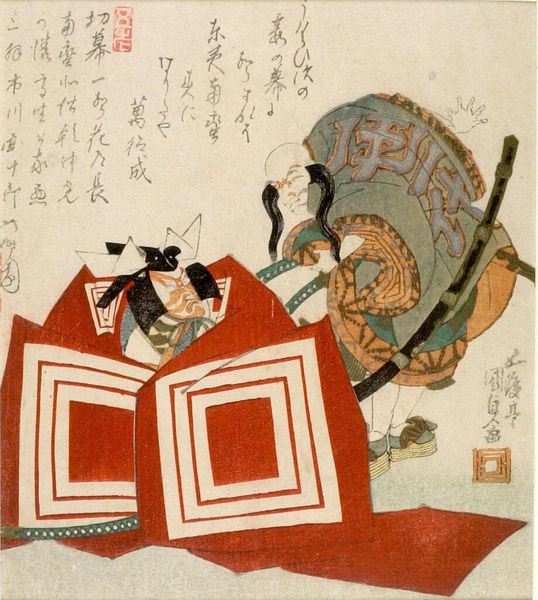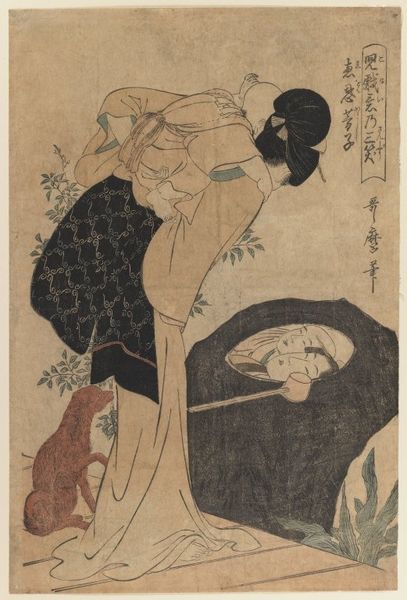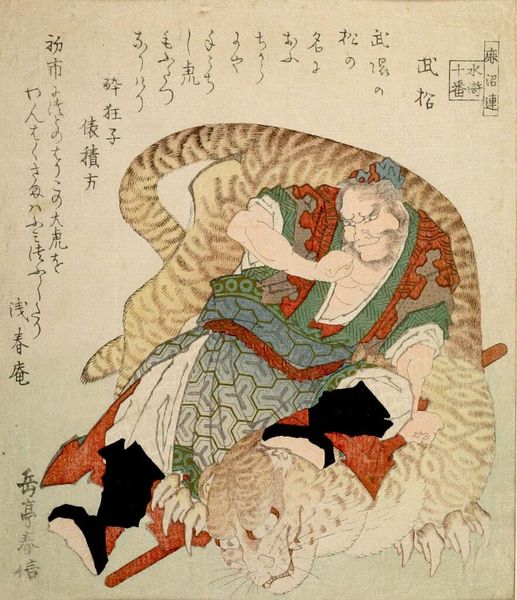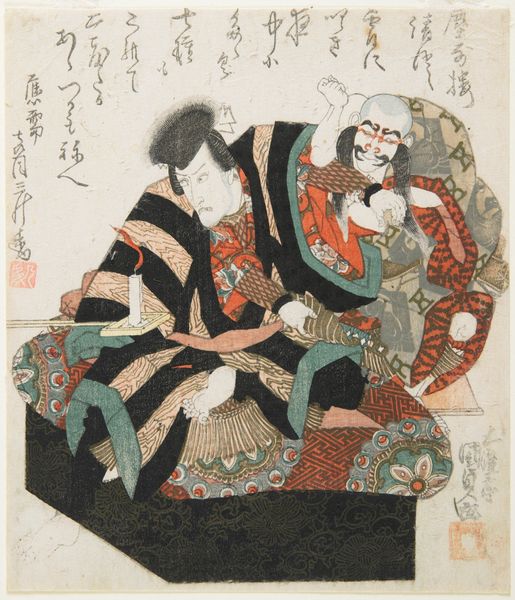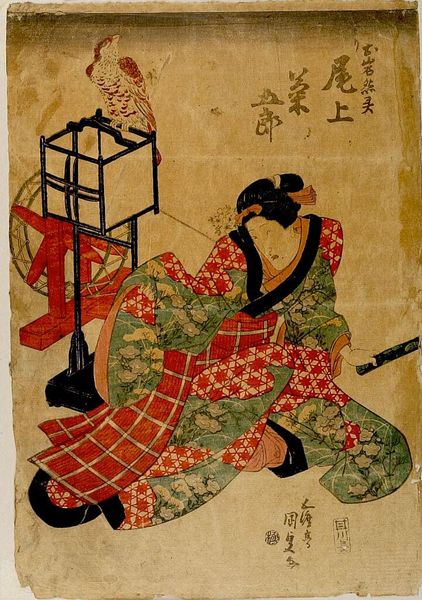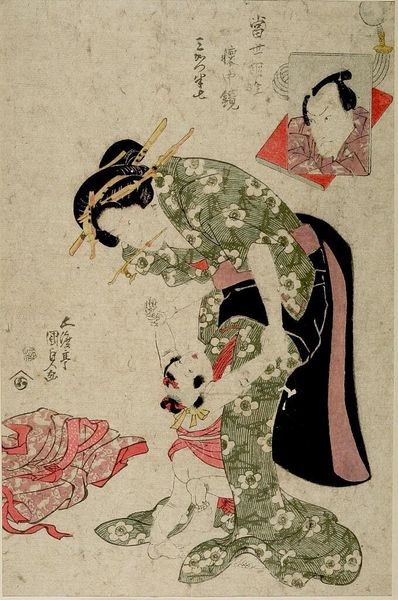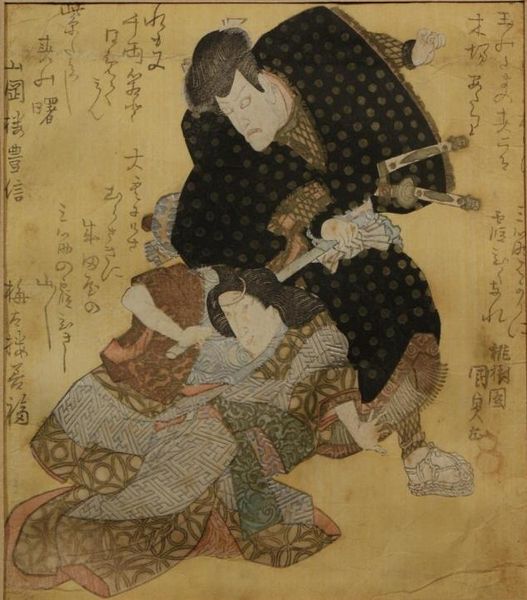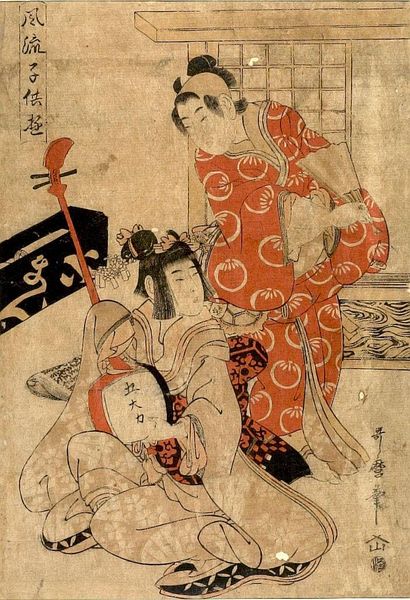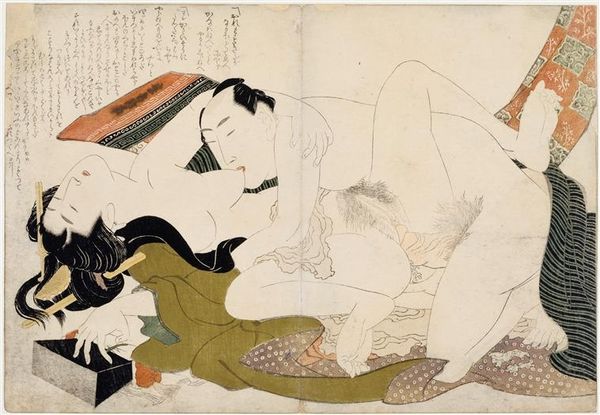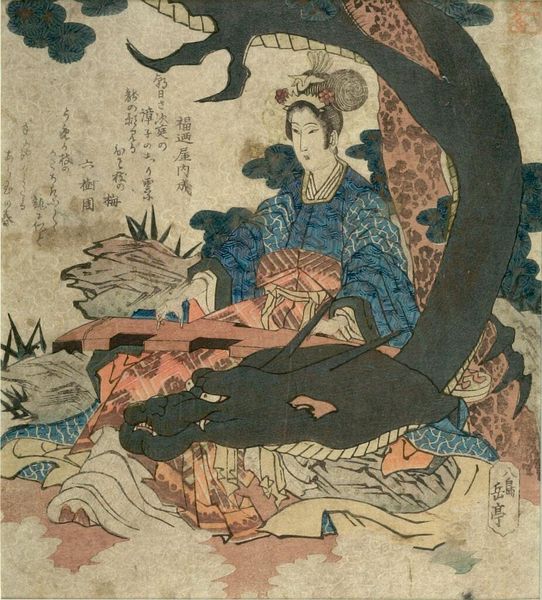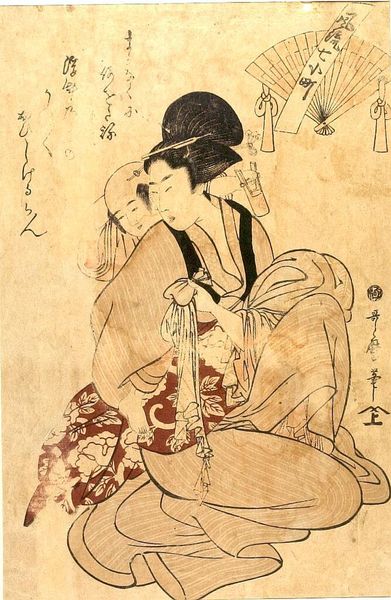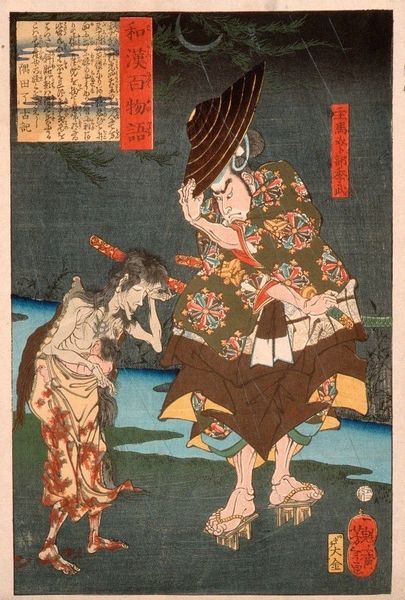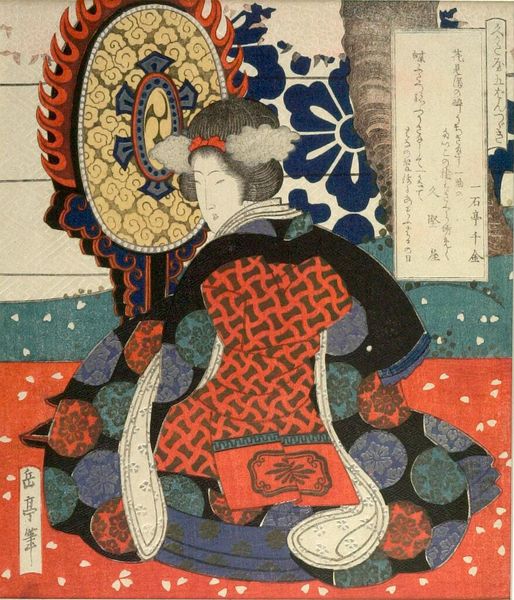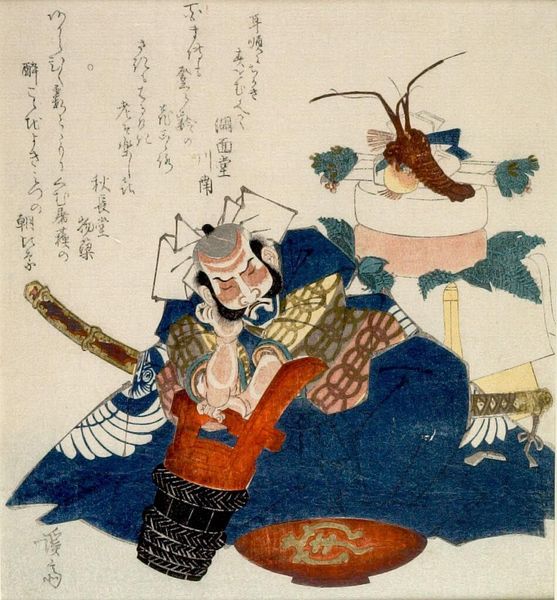
print, textile, woodblock-print
# print
#
asian-art
#
textile
#
ukiyo-e
#
figuration
#
woodblock-print
#
genre-painting
#
erotic-art
Copyright: Public domain
Curator: Let’s explore "The Red and Gold Blanket," a print created around 1835 by Utagawa Kunisada. This colorful woodblock print exemplifies the Ukiyo-e tradition. Editor: The bold lines and bright color palette immediately draw you in, don't they? There's a kind of intimacy and almost mischievous feeling that emanates from the composition. Curator: Precisely! The artwork provides insights into the Edo period’s evolving culture where depictions of pleasure quarters became more commonplace. These prints played a significant public role as a kind of commercial advertisement of those venues, a snapshot of entertainment and eroticism of the time. Editor: I see the visual narrative connecting to broader discussions around gender roles, desire, and societal norms of the time. How were women in these scenes portrayed and what implications did these representations have on the cultural understanding and experience of women? Curator: Ukiyo-e prints generally reflected an idealized vision of women who entertained. Looking at this print through the context of museums and collections, we also face interesting dilemmas in how such imagery is treated. They provide rich socio-political understanding that museums work to unpack through displays. Editor: These prints could have been circulated amongst a specific population segment who maybe also benefitted from systems of gender and social power— so how can we democratize knowledge in a way that is equitable? Who gets to access these historical narratives, and what responsibility do institutions have in providing educational context to prevent harmful, essentialized understandings about past social inequalities? Curator: I find this constant reassessment to be incredibly important as these collections change and become accessible to broader audiences. Editor: Definitely, seeing "The Red and Gold Blanket" provides a space for intersectional examination through art that is complex and valuable. It challenges us to view historical depictions through both social contexts as well as power relations in our current day.
Comments
No comments
Be the first to comment and join the conversation on the ultimate creative platform.
